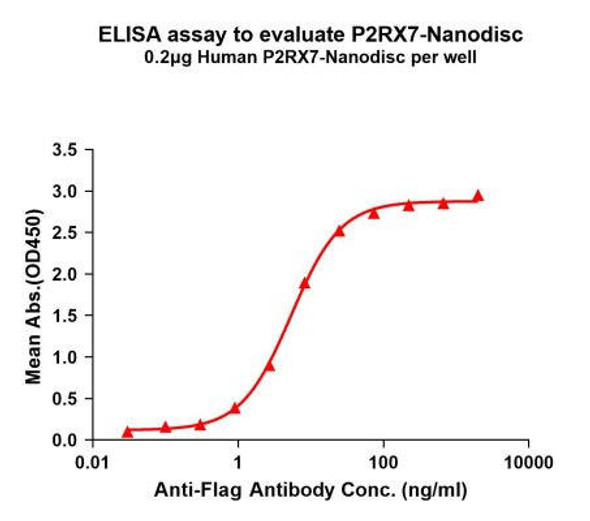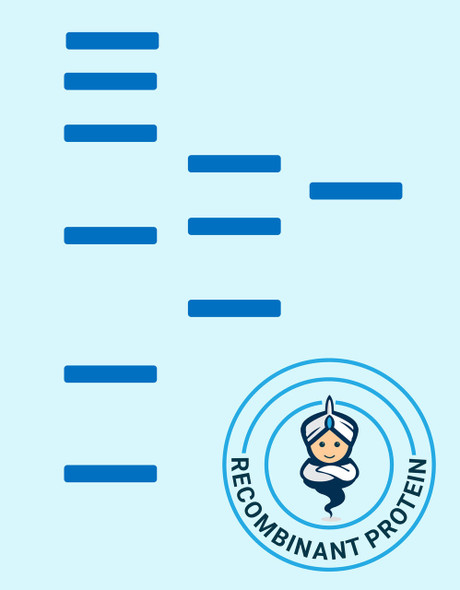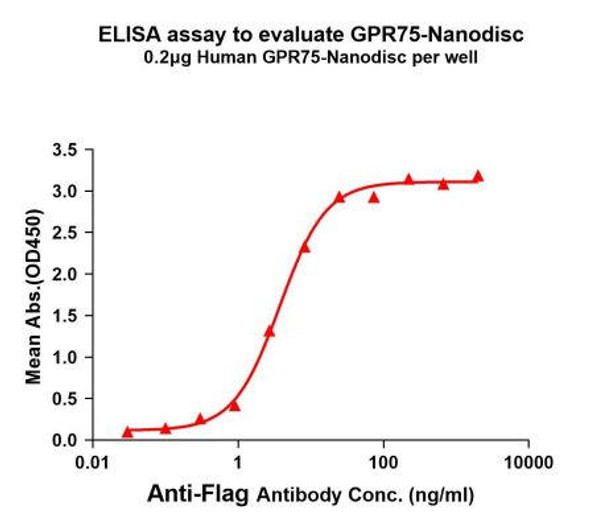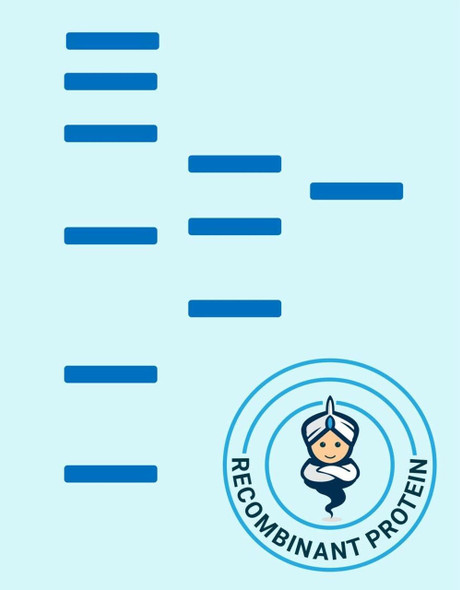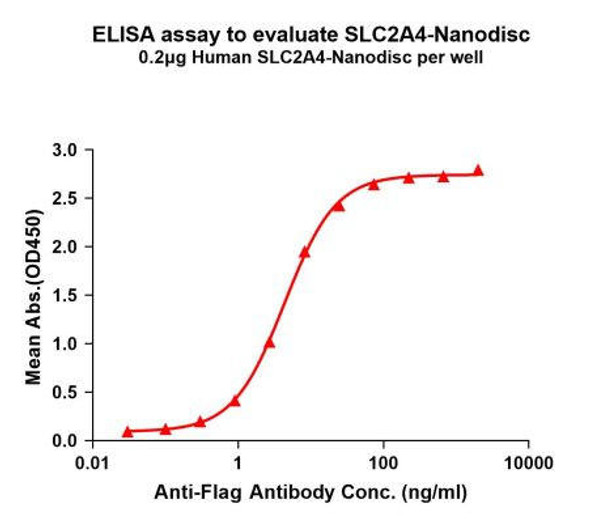Description
system_update_altDatasheet
| Product name | Human SLC7A11 full length protein-synthetic nanodisc |
| Size: | 10ug |
| Product SKU: | HDFP029 |
| Product Category | Full Length Transmembrane Proteins |
| Target: | SLC7A11 |
| Uniprot: | Q9UPY5 |
| Description: | Human SLC7A11 full length protein-synthetic nanodisc |
| Molecular Weight: | The human full length SLC7A11 protein has a MW of 55.4 kDa |
| Protein Family: | Druggable Genome, Transmembrane |
| Protein Pathways: | |
| Storage & Shipping: | Store at -20°C to -80°C for 12 months in lyophilized form. After reconstitution, if not intended for use within a month, aliquot and store at -80°C (Avoid repeated freezing and thawing). Lyophilized proteins are shipped at ambient temperature. |
| Synonyms: | CCBR1; xCT |
| Expression System: | HEK293 |
| Formulation: | Lyophilized from nanodisc solubilization buffer (20 mM Tris-HCl, 150 mM NaCl, pH 8.0). Normally 5% - 8% trehalose is added as protectants before lyophilization. Please see Certificate of Analysis for specific instructions. |
| Background: | This gene encodes a member of a heteromeric, sodium-independent, anionic amino acid transport system that is highly specific for cysteine and glutamate. In this system, designated Xc(-), the anionic form of cysteine is transported in exchange for glutamate. This protein has been identified as the predominant mediator of Kaposi sarcoma-associated herpesvirus fusion and entry permissiveness into cells. Also, increased expression of this gene in primary gliomas (compared to normal brain tissue) was associated with increased glutamate secretion via the XCT channels, resulting in neuronal cell death. [provided by RefSeq, Sep 2011] |
| Delivery: | 3-4 weeks |
| Usage | Research use only |




